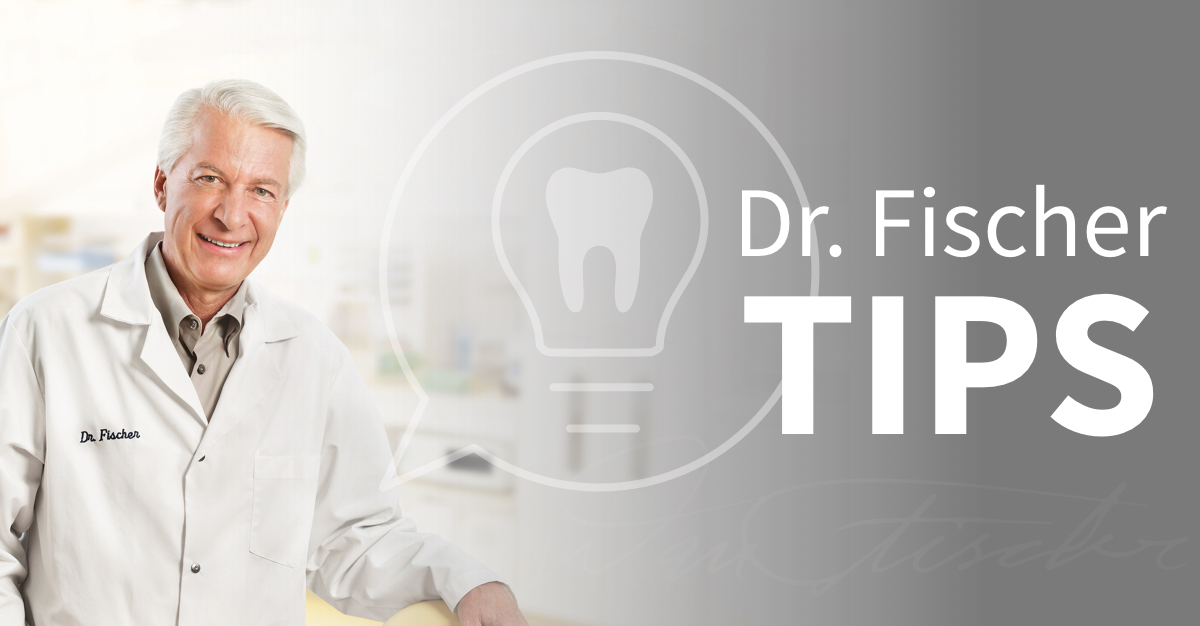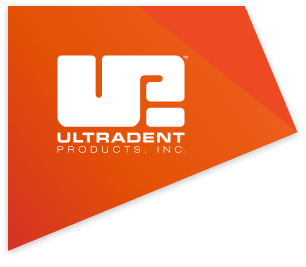For many years I was happy with the solid halogen curing light in my dental practice. But
then, LED curing lights were introduced into the market, and today they are rightly considered
to be the standard of light curing. But we should still be aware that not all curing lights offer the same benefits.
In order to evaluate the quality of curing lights, we need to look closely at the details. At Ultradent Products, we have been involved in the LED technology since 1997. We realised that LEDs were the future technology—but that LED lights needed to be tailored to the needs of the composite and the dental practice. In the meantime, our VALO™ curing light was developed into a sophisticated product line which provides excellent curing options for every clinical situation.
From my point of view, these are the most important criteria for the evaluation of curing lights:
Light Guide
„Classic“ curing lights had the light generator (a halogen lamp) built into a light body and the light itself was led out by a light guide. Even the manufacturers of some LED lights have decided to keep this construction. However, light guides will reduce the energy output. They are also usually bent at around 45° in order to avoid an excessive loss of energy. That‘s the first challenge. That 45° angle makes it difficult to position the light emission window parallel to the occlusal surface— especially in the posterior area of the mouth— to optimally illuminate a cavity. Also, fiber optics can lead to light loss. With proper lens design in the light head, we can ensure that the light beam does not fan out too much (Fig. 1).
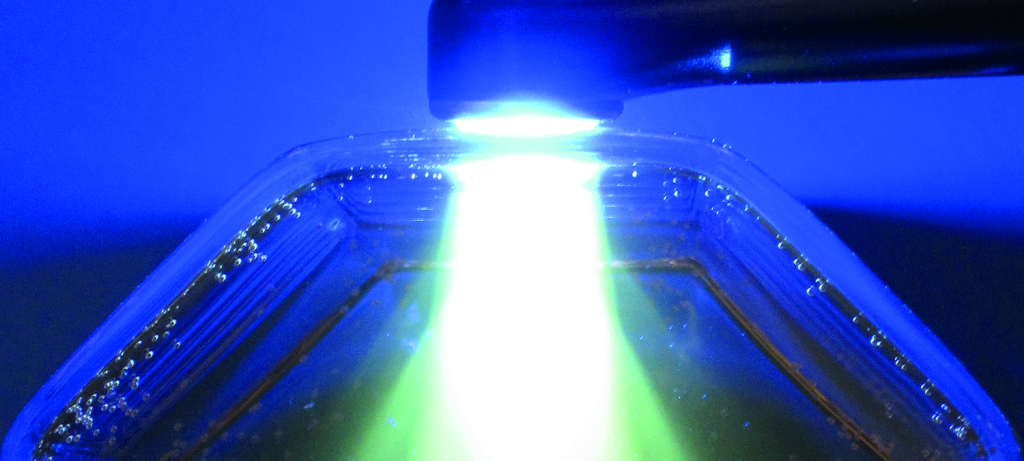
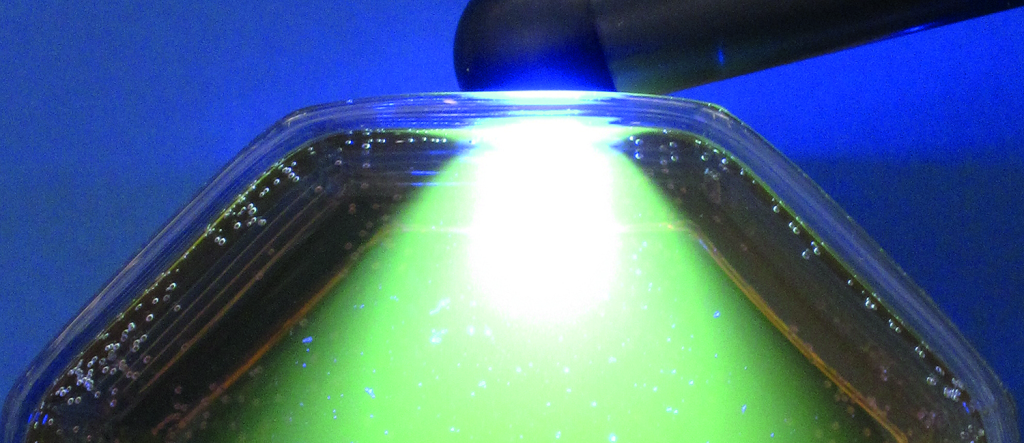
Fig. 1: A fan beam reduces the incoming energy. Shown here by shining into a glass of apple juice: The VALO light head is equipped with a unique glass lens system, which forms the light’s collimated blended beam (above). A light without a lens shows a greatly widened beam (below).
My conclusion: In terms of light curing, the light guide is incredibly important. Its design, as well as the inconvenient positioning which may result from the design, can cause a significant loss of power. In an ideal world, dentists would use a slim light head from which LED elements can be illuminated directly and whose light is directed by a lens.
Light Design
Curing lights should be carefully positioned at the right place in the mouth so that the light can reach the material to be cured. Often, this is not easy due to the patient‘s restrictive mouth opening. Shadow areas in cavities can lead to a significant reduction of the light exposure. This is compounded by the second challenge: The design of the light body. Its construction must be handy and slim (Fig. 2). In addition, it should be sturdy and resistant to the daily „rough“ requirements in a dental practice.
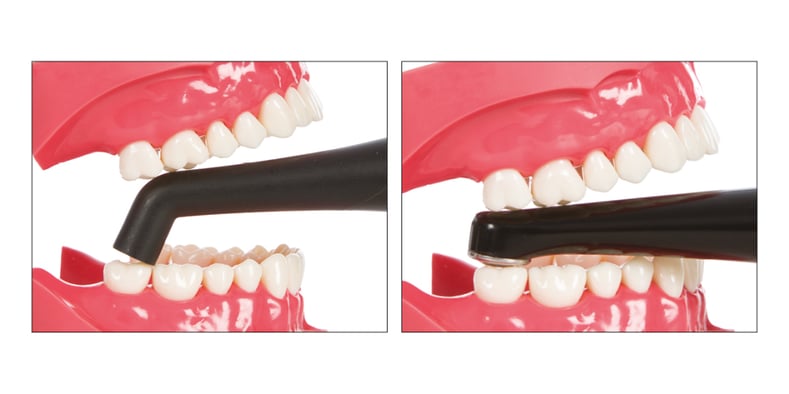
Fig. 2: The curing light should be well-positioned anywhere in the mouth, including the posterior area over an occlusal cavity. The slim VALO light head (right) allows easy and direct access to all curing sites.
My conclusion: A curing light should be break-resistant and robust. The shape must enable the user to reach each tooth surface and ensure the best possible illumination, even in a small mouth (children).
Light Intensity
While the first LED curing lights used to be quite poor, today’s LED intensity performs better than the quartz halogen lights. This is a great benefit, especially as experts found out that many composite fillings are chronically cured insufficiently. To be on the safe side, a light should provide more than 1.000 mW/cm². And hopefully, composite manufacturers will specify more clearly which amounts of energy are needed for a proper curing of their materials, so that the dentist can choose the appropriate device, time, and intensity.
My conclusion: An LED light that offers different intensities is the best device for reliable curing results in all clinical situations (Fig. 3).
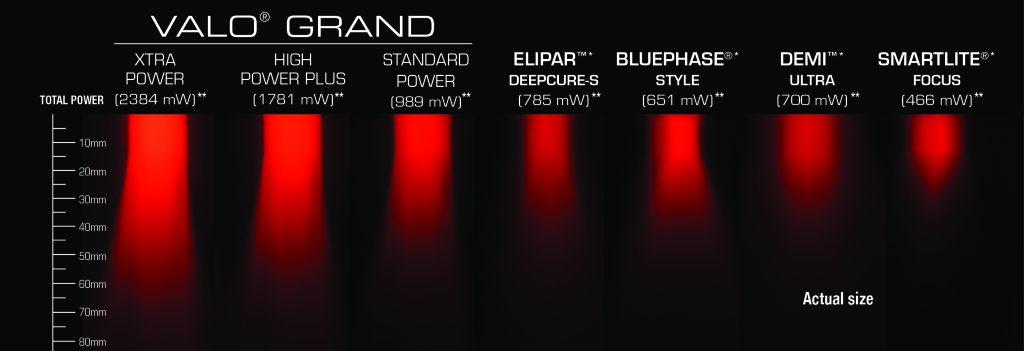
Fig. 3: Different curing modes can meet the requirements of the different clinical situations easily. Experts call for at least 1.000 mW.
Broadband Spectrum
Halogen lights literally had a built-in „broadband spectrum“. With LED lights, the bandwidth is more narrow. Many LEDs will only emit light between 440 and 480 nm. This spectrum covers camphorquinone, the most common photoinitiator, but not LucerinTPO, PPD, and others that are also often used (sometimes without the composite manufacturer disclosing it). These initiators require lower wavelengths (Figure 4).
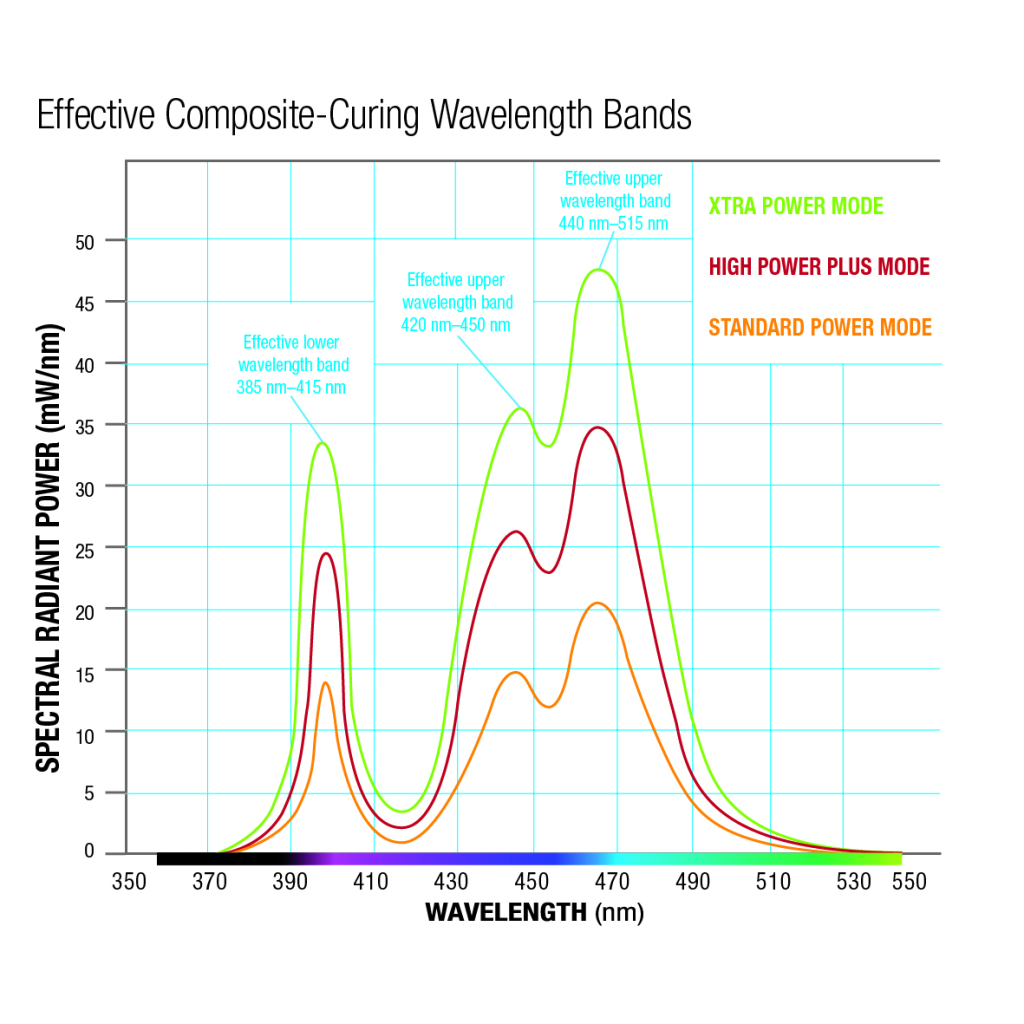
Fig. 4: In order to cover not only camphorquinone but also other photoinitiators, a curing light should provide a broadband spectrum, for safe and reliable results with any light-curing material.
My conclusion: LED lights should cover a wide spectrum of wavelengths (even below 440 nm) in order to cure all light-cured materials.
Energy Efficiency
Halogen curing lights only convert about 2% to 5% of the electrical energy they use into useful blue light. LEDs are at least 10 times more efficient, as they consume less power and develop less „waste heat“ to create blue light. Thanks to the LED’s lower power consumption, many LED curing lights work with batteries and therefore, a lot of lights became cordless. These lights were supplied with small, high-performance batteries, which allowed the curing light to produce the same light intensity as the lights which were plugged into mains power. One problem with this was the cost of replacement batteries when they eventually die. The VALO™ curing light uses a standardized battery, ensuring that they are easily replaceable for years to come.
My conclusion: In order to ensure that your light is always up and running, it should have a standardized battery or, alternatively, make sure your light can run off of mains power.
Heat Generation
As with all high powered lights, high-power LED lights can also generate a certain amount of heat. However, studies show that overheating of the pulp and tooth is very unlikely. In cases where higher intensities are used, a few seconds break between curing phases is sufficient to avoid heat build-up. Avoid the illumination of soft tissues, as they are much more sensitive to heat due to their light absorption behavior: red gingiva will absorb significantly more light than white tooth substance instead of reflecting it. If required, cool the area by blowing air over the tooth during gingival restorations.
My conclusion: Heat can be controlled by a suitable illumination technique. It is important
that sufficient energy is supplied to the restoration.
Design and construction of the VALO™ curing lights
We kept all the previously mentioned requirements in mind when designing and building our VALO curing lights. You will recognize the difference directly—no other curing light on the market is so durable and at the same time conveys the feeling of high quality. With the 1.000, 1.400, and 3.200 mW/cm² modes of the VALO light and the 1.000, 1.600, and 3.200 mW/cm² modes of VALO Grand light, „classic“ layered composite fillings can be cured. Additionally, curing through ceramic or deeper layers of composite is possible, as is polymerization in a few seconds, which is beneficial when treating children.
All VALO LED curing lights use a custom, multi-wavelength light-emitting diode (LED) for producing high-intensity light at 385 to 515 nm wavelength, which is capable of polymerizing all light-cured dental materials. With its incredible intensity it will also penetrate porcelain and is capable of curing underlying resin cements similar to a quality halogen light. And thanks to its slim design, the VALO light can easily be positioned in the mouth.
The requirements for a quality curing light are diverse, as are the different working habits of the users. That‘s why there is not just one VALO curing light (Figure 5). The choice is yours: the VALO Corded light is extremely slim and lightweight (the handpiece weighs only 115 g), and the cable is very thin and flexible. The VALO Cordless light works with modern, small, high-performance lithium-iron-based batteries and therefore does not need a cable. However, even with batteries, it has a low weight (only 170 g), and the head is as slim as the VALO Corded light.
The third, and newest, version is the VALO Grand light. The VALO Grand light combines all benefits of the revolutionary, award-winning VALO light with a 50% bigger lens. With this 50% bigger lens, the VALO Grand light is designed to easily cover a 10 mm molar. Consequently, the use of the VALO Grand light is able to save time and money, as a restoration can be polymerized completely and efficiently in only one curing cycle. One of the main problems dentists and patients encounter regularly are under-cured restorations. Under-cured restorations, especially posterior ones, can end up failing, causing the patient pain and additional work for the dentist. The VALO Grand curing light helps to solve this problem with the three power settings, which define the speed of cure: Standard, High Power Plus, and Xtra Power. The light’s large footprint (12 mm) and optimally collimated beam delivers consistent, uniform power over a range of surfaces for reliable, high-quality results. The handling is simple and uncomplicated with the power button, which is placed on both sides of the wand, so that regardless of how the user positions the light, the switch is easily and quickly accessible. The VALO Grand light is available in cordless and corded options.
The process of light curing, which is often delegated to the dental assistant, genuinely deserves more attention. Only curing with a strong, practical light and the right technique will deliver durable and esthetic restorations. The VALO and VALO Grand curing lights provide safety and ideal results in every curing step - without compromise.
Best regards,

Dan Fischer
Choose between our VALO curing lights. What they all have in common is the slim head, the high performance, the broadband LEDs, the concentrated light beam, and the robust and stable design.
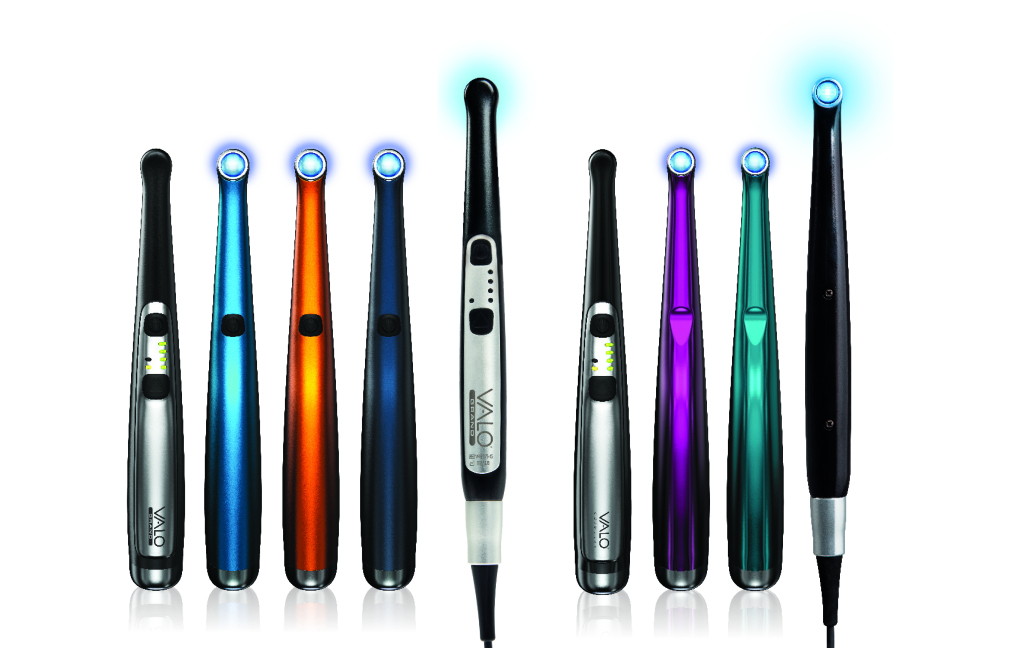
About Dr. Fischer
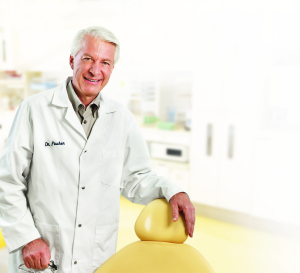
Dr. Dan Fischer is the founder and CEO of Ultradent Products, Inc., a leading dental manufacturer of high-tech dental materials, devices, and instruments with a 40-year history of innovation and quality. Its products are used worldwide by dentists, orthodontists, group practices, dental labs, government agencies, and universities. Ultradent Products’ vision is to improve oral health globally. For more information visit ultradent.com/eu.


